San Diego Comic-Con Still Reigns
“Hey, it’s the second-best writer at Newsarama.”
To her credit, Vaneta did not hit me. She turned around, saw it was me, and gave me a hug. Then she hit me (okay, just in the shoulder). We were on the crowded main floor of the 2007 San Diego Comic-Con. We talked briefly about what we were covering; I was pulling double-duty, working for both Newsarama.com and as an associate editor for Fangoria Comics, a spin-off of the vaunted horror magazine. I’d spent so much time working on Fangoria stuff and making connections to get there from the Midwest that I hadn’t really paid attention to other things that were going on, aside from what I’d be assigned to cover.
Then Vaneta said, “Downey’s here.”
That surprised me a little. We all knew that Robert Downey Jr. had been cast as Tony Stark in the forthcoming Iron Man, but I was still a little surprised that he would hit the show. Sure, other actors and directors had done the same thing in previous years (in fact, Robert Rodriguez was there that year for his and Quentin Tarantino’s Grindhouse), but this seemed different. It was indicative of the changing perception of what SDCC was, both to the entertainment industry and the outside world.
Flash-forward to today: Comic-Con International: San Diego marked its 50th year in 2020. What should have been a grand celebration instead had to shift online under the specter of COVID-19. Nevertheless, the fact that the event adapted and continued is a tribute to its pioneering spirit and its ability to change, morphing from a one-day show called the Golden State Comic Book Convention in March of 1970 before trying out a three-day format 50 years ago this week.
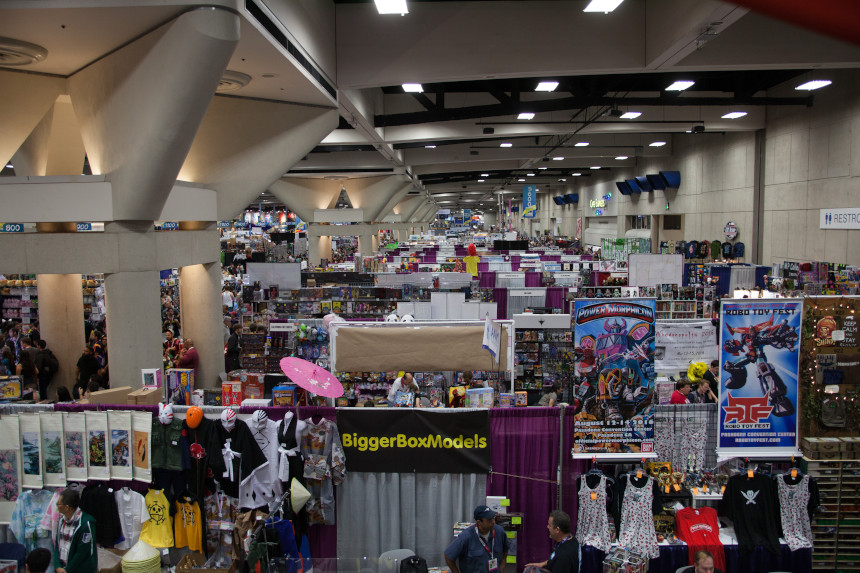
The original show was founded by Shel Dorf, Ken Krueger, Mike Towry, Richard Alf, Bob Sourk, Greg Bear, and Barry Alfonso. Dorf had run some of the first comic book conventions in the 1960s in Detroit before moving to California. The March 21, 1970, Golden State Comic-Minicon was Dorf’s notion of a test flight for a larger show. The Golden State Comic-Con ran from August 1 to 3, 1970. Total attendance was around 300 people.
As the show grew, it shifted through different venues and underwent a series of name changes. It was San Diego’s West Coast Comic Convention in 1972 before becoming San Diego Comic-Con in 1973. Since 1995, the event has been properly called Comic-Con International: San Diego, though many still refer to it as San Diego Comic-Con, SDCC, or, simply, San Diego. (If you say San Diego in a comic book store, they know you aren’t talking about the Padres.) The event itself is organized as a non-profit, and owns registered trademarks on the phrases “Comic-Con” and “Comic-Con International,” which has led to several other shows changing their names in the past several years (with “Comic Convention” or “Comic Fest” being the most frequent substitutions).
From the outset, the founders intended the show to be more than just comics. Creators and fans of science fiction and fantasy literature and film were welcomed from the beginning. In fact, co-founder Bear is an award-winning genre author of more than 50 books. In 1976, Roy Thomas and Howard Chaykin went to the show to promote a new Marvel comic that they were doing, an adaptation of a film that was due out in 1977. They only had a few stills to show to a tiny crowd. Still, it did make the attendees excited about that new movie. It was called Star Wars.
Over the years, as comic shops proliferated, the business boomed, and books like The Uncanny X-Men began to move insane numbers in the 1980s, San Diego got bigger and bigger. What was once an event that attracted 300 people began to attract thousands, then tens of thousands, then one hundred thousand. The mix of fans, creators, exhibiting companies, cosplayers, and occasional film and TV personalities made a potent brew. For years, the show has hosted both the Inkpot Awards, given to outstanding contributors in the genre fields, and the Will Eisner Awards, which are essentially the Oscars of comics. Yes, there were and are other fine conventions around the country, like North Carolina’s Heroes Con or Mid-Ohio Con or New York Comic Con or Chicago’s C2E2, but there has only ever been one San Diego.

I’d attended or worked at other cons before, but when I got the chance to go to San Diego, it was different. I felt like I was commuting to the beating heart of the pop culture universe. It was a veritable sea of people (attendance was reputedly 125,000 in 2007). It took almost thirty minutes to walk from one side of the main room to the other, and that’s if you didn’t stop. Fangoria hosted actor Michael Madsen (Reservoir Dogs, Kill Bill, etc.) for a signing that year, and I took one of his sons out on the show floor to shop for Star Wars toys. We went to parties for Troma Films and Rue Morgue magazine. A couple of Fango friends and I caught a ride with Ken Foree, the star of George Romero’s horror classic Dawn of the Dead. We exchanged pleasantries in a hotel lobby with Buffy the Vampire Slayer creator Joss Whedon (ironic considering that the MCU was launching that weekend and he’d be back in a few years, announced by Downey as the writer and director of Avengers). It was most certainly surreal.
The unique thing about my SDCC experience is that there was almost nothing unique about my experience. The show is a bright, candy-colored circus for almost everyone who goes. Yes, conventions in general have struggled with issues related to cosplayer safety, and San Diego in particular can be a nightmare when it comes to securing hotel rooms and admission, but the fact remains that as an entity, there’s not much that’s quite like it.

In 2008, which I did not attend, the Twilight Saga made a big splash. A panel for the second film, The Twilight Saga: New Moon crammed 6,000 attendees to see clips from the film and a panel with the cast. Over the next few years, attending fans of that series increased in numbers, leading to grumbling in some quarters about a perceived dilution of the show. Really, though, the disgruntlement seemed to be based on two things: the clogged exhibit hall areas caused by fans trying to jockey for position many hours ahead of the panel (which, okay, fair) and the fact that Twilight appealed primarily to women and girls (absolutely not fair at all). The success of Twilight at SDCC actually proved that the show could be a bigger tent and welcome fans of diverse genres and properties, as well as diverse fans.
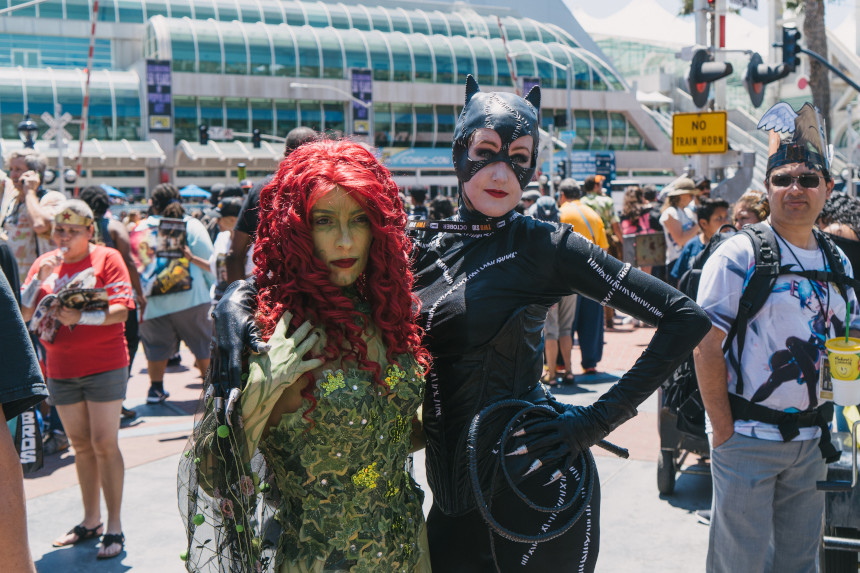
It might be fair for hardcore comic fans to feel a bit like the comics themselves have been marginalized at the show. The biggest reserves of press coverage focus on movie announcements and actor appearances. It’s a hard place to launch a new comic, as a vacuum of overwhelming P.R. tends to swallow smaller pieces of information. But looking too hard in that direction is a denial of the success that the show has become. That stuff that you liked, that stuff that you might have been made fun of for loving? Lots and lots of people like that stuff now, too. Celebrate that, instead of being put off by the fact that more and different people are at the show.
As you know, crowding wasn’t the problem this year. SDCC mounted “Comic-Con@Home,” a virtual effort with remote panels, online exclusive products, watch parties, and more. It was a valiant effort that contained some great virtual events, but of course, not the same. If all goes well in the world, it’s possible that Comic-Con International: San Diego could return next year. The important thing about this show is the same thing that is important about GenCon or any other celebration of fandom: it’s cool to love what you love. And it’s cool that other people get to, too.
Featured image: Sarah Mertan / Shutterstock
At the Apex, Purring Madly
Yes, I was foolish. Reckless too. But I don’t think I would have done anything different, even now that I can see the bigger picture.
Maybe I wouldn’t have been so vulnerable if I hadn’t just lost my cat, Jingle Monster – and a year before that, my dog, Tulip. I felt so grieved. I didn’t try to adopt new pets. How could I, knowing how much it would hurt when they died? How could I see their trust in me, their hope that I could help them when they were feeling bad? That’s what killed me, seeing their hope give way to despair. No sir. Not again.
That’s what I told myself. Yet I didn’t get rid of the cat food. That was my first mistake.
I work from a home office. If you’ve ever seen those clickbait titles online that say things like “15 Ways to Cut Belly Fat RIGHT NOW!”, I write a lot of those. Don’t get me wrong, I don’t actually know how to cut belly fat, but I’m good at research, and even better at making suggestions to people that sound plausible. In my defense, I stay away from recommendations that might kill people.
I’m very good at what I do, but I need to come up for air from time to time, so late one morning, six weeks from the day Jingle died, I wandered into the kitchen for a coffee break. I fixed my cup and leaned against the counter to drink it, listening to a house that had grown too quiet.
Funny how a little guy who had weighed less than five pounds could make such a giant hole in my life now that he was gone. Jingle had a meow that was far too big for his body. He used it when he felt I had spent too much time in the office and not enough time paying attention to a Jingle Monster.
I couldn’t help listening for that meow, though I no longer expected to hear it. That’s the only reason I heard the other sound. It was coming from the laundry room. I went to the door and paused at the threshold.
Crunch, crunch, crunch came from under the utility shelf where I stored Jingle’s dry food, and I wondered just how big the mouse was. Could it be a rat? I had never seen a rat in Arizona, except for the tiny, wild variety.
I got down on my knees and prepared to peer under the shelf, bracing myself for years of dust-bunny build-up. Before I could do that, something looked out at me.
Ho boy, I thought. Two kitty-cat eyes were framed in grey, velvet fur, tilted in that irresistible Hello Kitty way that turns otherwise sensible people into suckers. As soon as it saw me, it began to purr. A kitten had smelled the kibble I should have cleaned out from under that utility shelf, weeks ago. I was lucky the food hadn’t attracted a rat, but then maybe it had, and then the rat had attracted …
Wait a minute, I thought. How come Kitty has legs growing out of her head?
I backed up. The purring continued, but Kitty’s eyes were oddly unmoving. On closer inspection, I could see that they were markings.
Biomimicry, I thought to myself. I had even written articles about it, but I still hadn’t thought it all the way through.
She moved into the light – backed into it, actually, because what appeared to be Kitty’s head turned out to be her abdomen. As she emerged, I counted four legs, then six, then eight. She pivoted and stared at me (for real, this time) with four small orbs surrounded by several tiny ones. She had big, furry mandibles.
Damned if she wasn’t also kind of cute. She even had little pads on her feet that made them look like tiny kitty paws.
“Awww,” I said, warily.
Kitty-cat spider seemed way too friendly. When I inspected her business end (where she ate), I could see her impressive fangs would likely inject a potent toxin. Once she incapacitated me with that bite, she could feast on my face at her leisure, purring madly the whole time.
Or was the purr for my benefit, to put me at ease? Maybe she wouldn’t bother with it, once I was helpless.
“You’re amazing,” I had to admit. I wondered if I should grab my phone and take a picture of her. Would I find something like her online? Was she a new species? Even if she wasn’t, she would make a good article. In fact, Kitty was so interesting, so oddly cute, she might even become an online sensation …
She flexed her jaws, reminding me that biomimicry was also a predatory attribute. I started back, and so did she. Kitty disappeared under the shelves. I caught my breath, and then peered underneath to see where she had gone, ready to escape if she moved in my direction. I didn’t know it then, but I could not possibly have moved away in time if Kitty had decided to bite me.
Kitty was gone.
You’ve already named her. I got to my feet, shaking my head. Is that sensible? Did you see her fangs? What are you going to do about her?
You would think I would kill or capture her, right? But no, I worried about the safety and health of kitty-cat spider. After all, she was only doing what nature had designed her to do. True, I didn’t want her to do that to me, but at least I could make sure she wasn’t harmed.
Yep. That’s me. Defender of kitty-cat spiders who might eat my face.
I kept an eye out for Kitty all day, and well into the evening. I didn’t search for her anymore, because I had a feeling I had provoked her hiding instinct. If I were a kitty spider, I would lay low and wait for the human to fall asleep. A predator her size is also prey, and I assumed that her spider wiring must have equipped her with millions of years of survival strategies.
Hunting strategies, too. The idea of going to bed without knowing where she was made me feel pretty twitchy. She wouldn’t even have to inject me – if I woke up with an eight-legged Kitty on my face, I would have a heart attack. However, a strategy occurred to me as the day wound down and night crept over my neighborhood.
I have a sleeping bag that’s designed to keep scorpions and other venomous bugs from getting to you when you’re camping. You can seal yourself into it from head to toe, and it has mesh for breathing. So I hauled it out of its closet.
I peeked into the hallway. Nothing moved on the floor, so I carried the bag to my bed. I didn’t bother to turn down the covers. I sealed myself inside, sure that I would be safe from Kitty’s ultra fangs.
Pretty sure. Almost certain.
It wasn’t the most comfortable way to sleep, but I felt grateful for it. Just before I was about to drop off, I head skittering noises. Something small climbed onto my sleeping bag and moved around, as if trying to figure out where I was. Finally it settled in one spot, just where Jingle would have curled up, and I heard another noise.
Purring.
“Oh, that’s fiendish,” I said, and then I fell asleep.
I was afraid to move all night, mostly because I worried I might squish Kitty. When morning came, I worried about something else, because she was gone. I emerged from the sleeping bag, half-expecting her to leap at my face, once it was no longer protected. She was nowhere in sight.
Outside, someone roared with anger, and I heard a crash, then the sound of something breaking. My neighbor Thor was at it again. He hated the cats that invaded his flower garden, and he had thrown many a pot at the four-footed rascals. To be fair, it was a gorgeous garden, and cats do have a tendency to poop where you don’t want them to. I had done my best to keep Jingle inside, partly to save Thor’s garden and partly to save Jingle. My cat had a fiendish side, and he enjoyed tormenting our next-door neighbor a little too much.
Just imagine what Thor would think of Kitty! The only thing he hated more than cats were bugs.
I heard another crash, but I suspected Thor was venting anger at this point. He always had that to spare. If he didn’t have a garden to occupy his time, he might have spent it building bombs instead.
I walked cautiously out of the bedroom, down the hall and to the kitchen. Kitty did not leap out at me. When I peeked into the laundry room, I saw her next to the shelves. I wondered if she was waiting for me. When I moved closer, she began to purr.
“Are you hoping for crunchies?” I said. “I’m out of them.”
I shouldn’t have been worried about feeding her, except that a hungry spider might decide to improvise breakfast from my carcass. What would it hurt if I found something she liked? But what would that be (other than me)?
I opened a can of tuna and dumped it into a bowl for her. Some spiders eat fish, right? Fishing spiders? Maybe they suck out fish blood or something, but I figured it was worth a try.
She seemed interested. She crawled partway into the bowl, but then she just sort of sat there. I started to wonder if maybe she preferred I didn’t watch her. Maybe she felt safer eating alone, so I left her there and went to work on my computer for a while.
I forgot about her for a couple of hours. When I went into the kitchen to make a sandwich, I remembered, so I peeked into the pantry.
The bowl was empty. “Score!” I said. “Good kitty!”
Still, I had to wonder – what was she eating before I started feeding her? Birds? Mice? Shih-tzus and/or small children? She was as big as a kitten. For a spider, that’s pretty damn big.
I looked for her, but she wasn’t under the shelves.
On my way out of the laundry room, I noticed the trash was overflowing, so I hoisted the bag and took it outside to the container next to my garage. I was about to toss it in when I had a scary thought. Could Kitty have climbed into the bag?
It was a hyper-vigilant impulse, and I knew that, but I opened the bag and rummaged through it, just to be sure. No giant, kitty-mimicking spider presented herself, so I breathed a sigh of relief and put the trash bag where it belonged. Returning to the house, I opened the door gingerly, then searched the perimeter to make sure Kitty wasn’t near the door, ready to rush out. I was so focused on that, I forgot to lock the door when I closed it behind me again.
That turned out to be a fateful oversight.
Nothing moved in the house. I didn’t hear purring or skittering, so I walked back to my office, which also happens to be my bedroom. My desk and computer are parked at the foot of my bed, right next to an arcadia door that leads to my patio. On pleasant mornings, I like to sit out there with a cup of coffee. The weather was still nice, so I had the door open, but the screen door was shut to keep out the flies.
Kitty had climbed up the screen.
“There you are,” I said. “Nice view?”
She waved a leg at me. I decided it was a friendly gesture – or at least, not overtly hostile. When I sat in my chair and fired up my computer, Kitty didn’t budge from her spot.
I worked there all morning, checking on Kitty from time to time. Sometimes she climbed a little higher; sometimes she settled lower, but mostly she seemed content to be where she was. The morning was beginning to give way to afternoon when I heard Thor yelling outside. From his tone, it was more of a general rant than one directed at someone or something in particular.
Thor isn’t really his name. I probably should have learned what it was, but I avoided him at all costs. I called him Thor, not because he was handsome like the guy in the comics or the movies, but because he had a tendency to storm at people. I’ve never seen a man so easily triggered. Since he was my next-door neighbor, he most often yelled at me about the way I was neglecting the weeds and/or the invasive grass. The jungle was getting a little thick out there.
As I said before, Thor had a phobia about bugs. He never called the yard police on me, so I might give him credit for that, except that Thor never called them because he was also paranoid that the government was out to get him.
Personally, I thought it was pretty damn funny that the guy who felt Black Hat agents were watching his every move was also inclined to spy on his neighbors (perhaps expecting to see us in secret meetings with his enemies?), but I should have realized that the guy who hated the tall grass because of the bugs it attracted would be pushed over the edge if he could see the kitten-sized arachnid climbing on my screen door.
“Goddammit!” he yelled, loud enough to break glass.
I looked up and saw his purple face, way closer than it should have been if Thor were keeping to his own property. “What are you doing in my yard?” I called, but Thor hadn’t waited to hear that. He charged around the side of my house, through a gate I had apparently forgotten to lock, so it was a good thing my front door …
Wait. Did I lock that when I came back from taking out the trash?
I jumped out of my chair and ran to the front of the house. I could see that the bolt was in the unlocked position. Just as I reached for it, the door slammed open. Thor steamed in like a freight train. He brandished a shovel as if it were the hammer Mjolnir.
“I warned you what would happen if you didn’t cut that grass!” he thundered. “How many times did I warn you!?”
“Leave her alone!” I tried to hold onto his arm. “She’s not hurting anyone!”
He shoved me into my bookshelf and stalked past me and down the hall. I scrambled to my feet and ran after him. “This is my house,” I cried. “Get out or I’m calling the police!”
He stopped dead in the doorway of my office, but I was still going full speed, so I bounced off him and ended up on my butt. Looking past him, I realized Kitty wasn’t on the screen anymore. She was on the floor. She reared up and showed him her fangs.
Thor hoisted his shovel. Or at least I think that’s what he started to do, because he didn’t get far before Kitty Cat pounced on him.
She moved so fast, I could barely follow her progress across the floor, up his leg, all the way up to his neck. He stiffened and his eyes went wide. Kitty leaped away from him and onto the bed, where she burrowed behind my pillows.
Thor stood like a statue. I could see two livid marks on his neck where she had bitten him. His shovel fell over with a plonk, and then he settled to the floor. It was like watching a sack of potatoes redistribute itself. Is he melting inside? I wondered. Is she going to eat his face now?
However, Kitty did not reappear, and Thor was still breathing. “Are you okay?” I asked him.
I don’t think he heard me.
I called 911. “My neighbor is unresponsive on the floor,” I said. “I think something bit him.”
“Did you see it?” asked the operator. “Was it a snake?”
“No,” I said.
“Was it a scorpion? A spider?”
“I’m not sure.” That was sort of true.
It took ten minutes for the paramedics to show up. I felt awed by their efficiency. They asked me the same questions the operator did, and I gave the same answers. Fortunately, Kitty did not come out of hiding.
“Sir – ,” an EMT shined a light in his eyes, “do you know where you are? What’s your name?”
Thor blinked. “Pretty colors,” he said. “So nice … ”
The bite marks on his neck were obvious. “Whatever it was,” said the EMT, “It must have been big.”
“Goodness,” I said.
“You might want to sleep in another room tonight,” he suggested. “Maybe even a hotel, until you can get an exterminator in here.”
“Yeah,” I said.
They packed Thor up and hauled him away. I watched them load him into the ambulance.
I checked behind my pillows. Kitty wasn’t there. I almost cried.
That night, I was extra careful when I got into my sleeping bag. Kitty may have been hiding in or near the bed, and it would be a shame to crush her after she had fought like a warrior, besting Thor and the shovel Mjolnir. I zipped myself up and lay there, listening. It didn’t take more than fifteen minutes before I heard the skittering. “Kitty,” I called. “Is that you?”
Presently I felt her weight on the sleeping bag. She settled in her usual spot, and purred. I thought for a long time, and then I unzipped the bag just enough to uncover my head. “I’m sorry, Kitty. That was a close call.”
She continued to purr.
“That was the coolest thing I ever saw,” I said. “You’re a ninja kitty spider.”
I felt her settle in. I swear, it wasn’t that different from the way Jingle Monster made himself comfortable.
“Good Kitty,” I said, and zipped myself back up.
A couple of weeks went by without incident, unless you count the fact that Kitty and I spent more and more time together. She found a spot on the desk to perch while I was working. It was the same spot Jingle had favored, and I wondered if she could smell him there – or whatever sense spiders have that approximates that sort of thing.
I had put the incident with Thor out of my mind, until the day my doorbell rang. I’m a hermit, so I’m never happy to hear that sound, but I was extra dismayed when I looked through the peephole and saw Thor standing on my front porch. I could imagine what he was going to say to me.
You need to destroy that bug! I’m going to sue you! I want my shovel back!!
He was the one who had invaded my home and assaulted me – that’s what I was going to have to remind him of. It wouldn’t be pleasant, but I shouldn’t put it off. Thor wasn’t the kind of guy to go away until he had his say.
At least I knew Kitty could defend herself if he got frisky again. I opened the door, leaving the security chain on.
The man I found on the other side could not have been more different from the neighbor I thought I knew. He looked sheepish. He wrung his hands. “Will you get her to bite me again?” he said. “Please?”
I blinked. “Um. What?”
“I feel so good, now. It’s like some kind of medicine. I swear, you could make a million dollars!”
At least he wasn’t carrying the shovel. However, I didn’t feel inclined to trust him. “I don’t want to scare her,” I said. “I don’t want you to – ”
I never got a chance to finish that sentence. Kitty Cat darted through the gap between the door and the jam and up Thor’s leg. She went for his neck again.
“Okay,” I said. “Never mind.”
She bit him and leaped away, landing on the cabinet next to the door, but this time she didn’t hide. She sat and watched him.
This time for sure, I thought. She’ll eat his face.
However, Kitty didn’t make a move toward Thor – and he didn’t faint, this time. He just looked really, really happy.
“Well,” I said. “I guess that’s – um – okay now. You seem like … um … ”
Thor turned and walked stiffly down the front walk, moving like a robot. I closed the door and locked it. For a long moment, Kitty and I regarded each other.
“Good kitty,” I said at last.
She purred.
When I went back to the office, Kitty climbed down from the cabinet and followed me. She moved confidently, like someone who knew she was home. I sat at my desk, and she climbed into her spot, settling down to nap.
It was official. We were family.
That night, I didn’t seal up the sleeping bag. I left my face exposed. “Good night, Kitty Cat,” I said.
I heard her purring.
She didn’t eat my face. I woke up the next morning, and she was in her usual spot on my desk. The sight of her perched there made me ridiculously happy.
Maybe I’m irresponsible. I haven’t reported Kitty to local entomologists, or animal control or – you know – the zoo or whatever. Maybe she really is some apex predator that could lay thousands of eggs that would grow into kitty cat spiders that will overrun the world and eat everybody. Or weave us all into webs, and bite us, and control our minds like in the Matrix.
But you know what? The world made Kitty Cat. If she’s here, it’s because the world is ready for her. Who am I to argue with that?
She’s sitting in my lap, even as I type that.
Yeah, she’s probably going to get me some day. Or maybe she won’t. I’ll let you know.
(Unless I can’t.)
Featured image: Shutterstock.
The Magic of Christmas in Fantasy Literature
Horror tales might take place near Halloween. Romantic comedies occasionally intersect with Valentine’s Day. And it’s not unusual for action movies to take place during the winter holiday season. However, it’s easy to overlook the deeply entrenched relationship between Christmas and fantasy literature. One could ascribe it to the general feeling of the magic of the holidays, or in some cases to the European tradition of telling ghost stories at Christmas. Whatever the case, there remains a strong association between the two, and we’ll look at six of the most famous instances in literature.
1. The Nutcracker and The Mouse King by E.T.A. Hoffman – 1816
This German story introduced us to what would become a multi-format holiday classic. Beginning on Christmas Eve, the original story introduces Marie, her inventor Godfather Drosselmeyer, the Nutcracker, and the seven-headed Mouse King. Over the years, the story would be adapted and changed (with Marie being renamed Clara in many other versions). The Three Musketeers author Alexander Dumas wrote his own version in 1844, and that particular take was adapted for the Tchaikovsky ballet. Most of the various versions include looks at the Doll Kingdom and the mouse society. The trope of toys coming to life would repeat in homages that are both obvious (like 1883’s Pinocchio) and less direct (Toy Story).
2. A Christmas Carol. In Prose. Being a Ghost Story of Christmas. by Charles Dickens – 1843

We hardly need to explain this one to you, but there are a few details you might not know. For example, Dickens wrote an earlier story that can be seen as a dry run for A Christmas Carol. It was called “The Story of the Goblins Who Stole a Sexton.” Appearing in The Pickwick Papers in 1836, he told the story of goblins helping a church official named Gabriel Grub see the light of Christmas by showing him the past and future. The later version, influenced in part by the works of Washington Irving, the growing popularity of Christmas celebrations in England, and Dickens’s own awareness of the problems facing poor children, was immediately popular upon release and sold through a first printing in days. Carol has never been out of print since its release, and has been adapted for stage, radio, film, and television numerous times. Dickens himself did 128 public readings of the story in his life (only the first was the full thing; thereafter, he did shorter versions).
3. The Life and Adventures of Santa Claus by L. Frank Baum – 1902
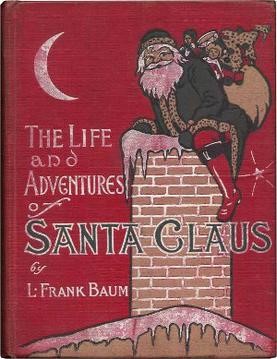
Though he’s best known for creating the wonderful world of Oz, L. Frank Baum also wrote this well-loved book that served as the basis for the 1985 Rankin-Bass special. This one goes in interesting places, as it posits a baby Santa found by the immortal Ak, who would entrust his care to a lioness and wood nymph. Santa eventually invents toys, which angers the demons that make children misbehave; this leads to a war between the immortals and the demons and their monster allies. The Council of Immortals later debate on whether to add Santa to their ranks. Baum wrote a short story sequel called “A Kidnapped Santa Claus” that involves more demon chicanery.
4. The Lion, the Witch, and the Wardrobe by C.S. Lewis – 1950
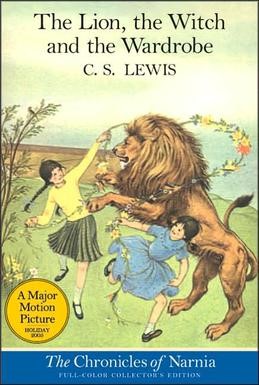
Christmas is rooted deeply in the heart of The Lion, The Witch, and The Wardrobe, the first book published in C.S. Lewis’s Chronicles of Narnia. Early on, the faun Mr. Tumnus reveals the threat of the White Witch, who is determined to make it “always winter, but never Christmas” in the fantasy land. Of course, the story relies on religious iconography, with Aslan representing a Christ-like figure. Despite those occasionally serious overtones, there’s still room for an appearance by Santa himself, or rather, Father Christmas. At a critical point in the plot, as Aslan’s return is disrupting the Witch’s plans, Father Christmas pays a visit to the child heroes of the story, gifting them with weapons that they’ll be able to use to fight the Witch’s army.
5. The Dark Is Rising by Susan Cooper – 1973
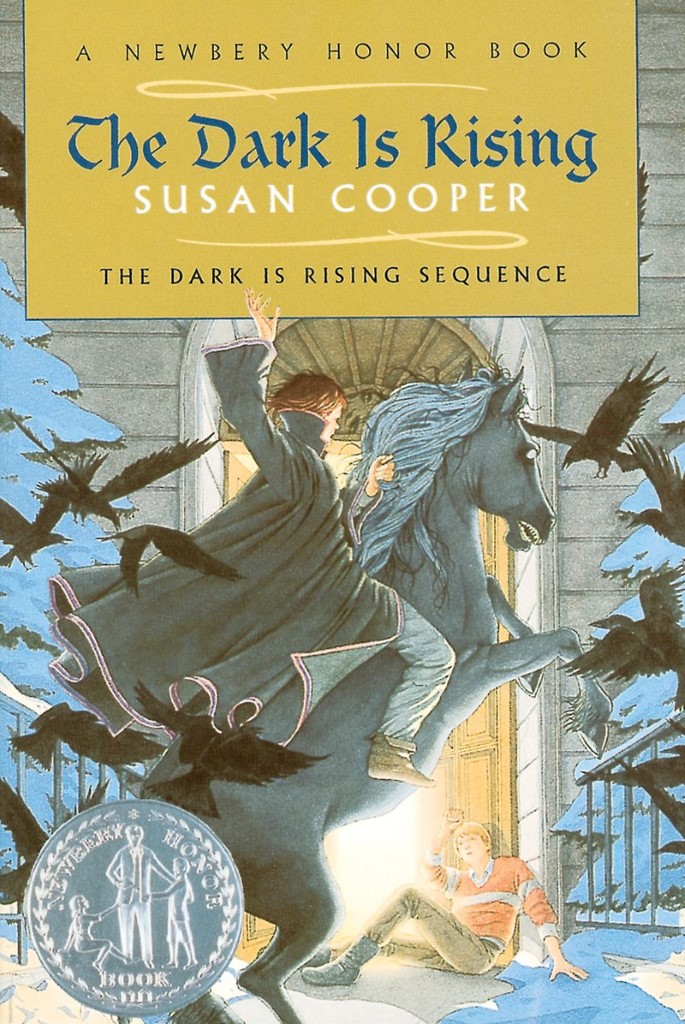
The second novel in Cooper’s Dark is Rising Sequence introduces Will Stanton, who will become the primary protagonist of the overall story. On his eleventh birthday, Stanton, the seventh son of a seventh son, discovers his magical destiny as an Old One of the Light, beings that battle the evil of the Dark. This plays out against the backdrop of a Welsh winter, as the “twelve days of Christmas” will be the time that the Dark is rising. A number of Welsh and English Christmas traditions are referenced and incorporated into the story, including a sequence of time travel that allows Will to witness a Yule feast of centuries past.
6. The Harry Potter Series by J.K. Rowling – 1997-2007
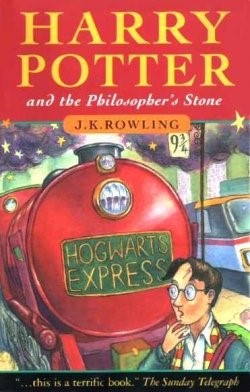
Though nothing overtly magical is ever suggested about the holiday in the Harry Potter series, Christmas itself plays a role in each of the seven books. There’s a bit of a suggestion that Christmas is somewhat magical to Harry himself as, in his life prior to the events of the first book, he’s never really gotten presents (or, quite, frankly, had much to celebrate). Christmas in the series becomes emblematic of family as Harry grows closer to Hermione, Ron, and the rest of the Weasley family. The books don’t delve into any larger issues with Christmas (there’s never a suggestion that, for example, Father Christmas is a real wizard), but its role in each book and the suggestion that, at the very least, it is special to Harry, adds extra weight to our feeling that Christmas is a fantasy staple.
As an added bonus, check out Litreactor’s Advent Calendar of Fantasy Fiction, where they recommend a different holiday fantasy story for each day of December.